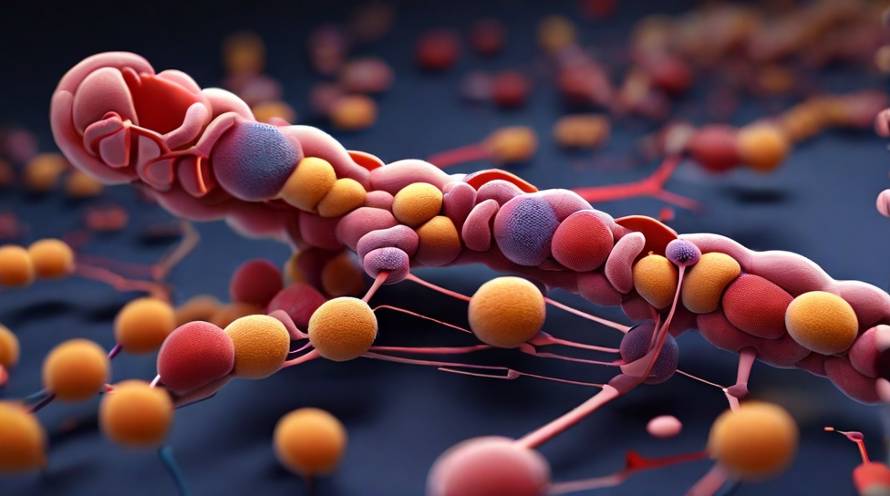Summary: New research from Bar-Ilan University reveals a connection between disrupted gut microbiomes and increased aggression in mice, with potential implications for understanding human behavior.
Estimated reading time: 5 minutes
In a groundbreaking study, researchers at Bar-Ilan University have uncovered a significant link between the gut microbiome and aggressive behavior in mice. The findings, published in the journal Brain, Behavior, and Immunity, suggest that early-life disruptions to the microbiome, particularly from antibiotic use, may lead to long-term behavioral changes.
Led by Prof. Omry Koren and graduate student Atara Uzan-Yuzari from the Azrieli Faculty of Medicine, the study builds on previous research that showed a correlation between antibiotic exposure and increased aggression in fruit flies. By using a mouse model, the team has taken this investigation further, examining behavioral, biochemical, and neurological changes in response to microbiome alterations.
The Gut-Brain Connection
The researchers employed various methods to study the relationship between the microbiome and aggression. One key experiment involved transplanting microbiomes from infants who had received antibiotics shortly after birth into mice. The results were striking, with these mice showing notable increases in aggression compared to those receiving microbiomes from infants not exposed to antibiotics.
Prof. Koren stated, “Our findings suggest that a disrupted microbiome during critical developmental periods can lead to persistent aggressive behaviors later in life in mice.” This observation highlights the potential long-term consequences of early-life antibiotic use on behavior.
To assess aggression levels, the team used the resident-intruder paradigm, a common method in behavioral studies where a foreign mouse is introduced into the home cage of a resident mouse. The results showed a clear correlation between reduced diversity in gut bacteria—caused by antibiotic treatment—and increased aggression.
Biochemical Changes and Brain Function
The study delved deep into the biochemical mechanisms underlying these behavioral changes. Researchers measured neurotransmitter levels, including serotonin and tryptophan, in the brains of the mice. They also identified key patterns of gene expression in several brain regions, with the septum emerging as a crucial area in regulating aggression.
Importantly, the research utilized “humanized” mice, which have been implanted with human intestinal bacteria. This approach enhances the relevance of the findings to human health and behavior, providing insights into how early-life antibiotic exposure might shape future social behaviors in people.
Implications and Future Research
The findings of this study open up new avenues for understanding how early-life interventions could influence long-term behavioral outcomes. It suggests that the gut-brain axis plays a critical role in the development of aggression, particularly when the microbiome is disrupted during crucial developmental periods such as infancy.
This research could lead to the development of new strategies to mitigate the effects of early-life microbiome disruptions and potentially improve social behavior outcomes. However, more research is needed to fully understand the implications for human health and behavior.
The study, funded by a European Research Council (ERC) Consolidator Grant, represents a significant step forward in our understanding of the complex relationship between the gut microbiome and behavior. As research in this field continues to evolve, it may provide valuable insights into the treatment and prevention of aggression-related disorders.
Quiz:
- What was the main finding of the Bar-Ilan University study?
- How did the researchers assess aggression in mice?
- What brain region was identified as crucial in regulating aggression?
Answer Key:
- The study found a link between disrupted gut microbiomes and increased aggression in mice.
- Researchers used the resident-intruder paradigm, introducing a foreign mouse into the home cage of a resident mouse.
- The septum was identified as a crucial brain region in regulating aggression.
Further Reading:
- The Gut-Brain Axis: https://www.nature.com/articles/d41586-020-00194-2
- Microbiome and Mental Health: https://www.nature.com/articles/d41586-019-00483-5
- The Dark Side of Antibiotics: Adverse Effects on the Infant Immune Defense Against Infection: https://www.ncbi.nlm.nih.gov/pmc/articles/PMC7593395/
Glossary of Terms:
- Microbiome: The collection of microorganisms living in a particular environment, such as the gut.
- Gut-Brain Axis: The bidirectional communication system between the gastrointestinal tract and the central nervous system.
- Resident-Intruder Paradigm: A behavioral test used to assess aggression in animals by introducing a foreign individual into the territory of a resident.
- Neurotransmitter: Chemical messengers that transmit signals between neurons in the brain.
- Humanized Mice: Laboratory mice implanted with human microbiota to better model human biological processes.
Enjoy this story? Get our newsletter! https://scienceblog.substack.com


